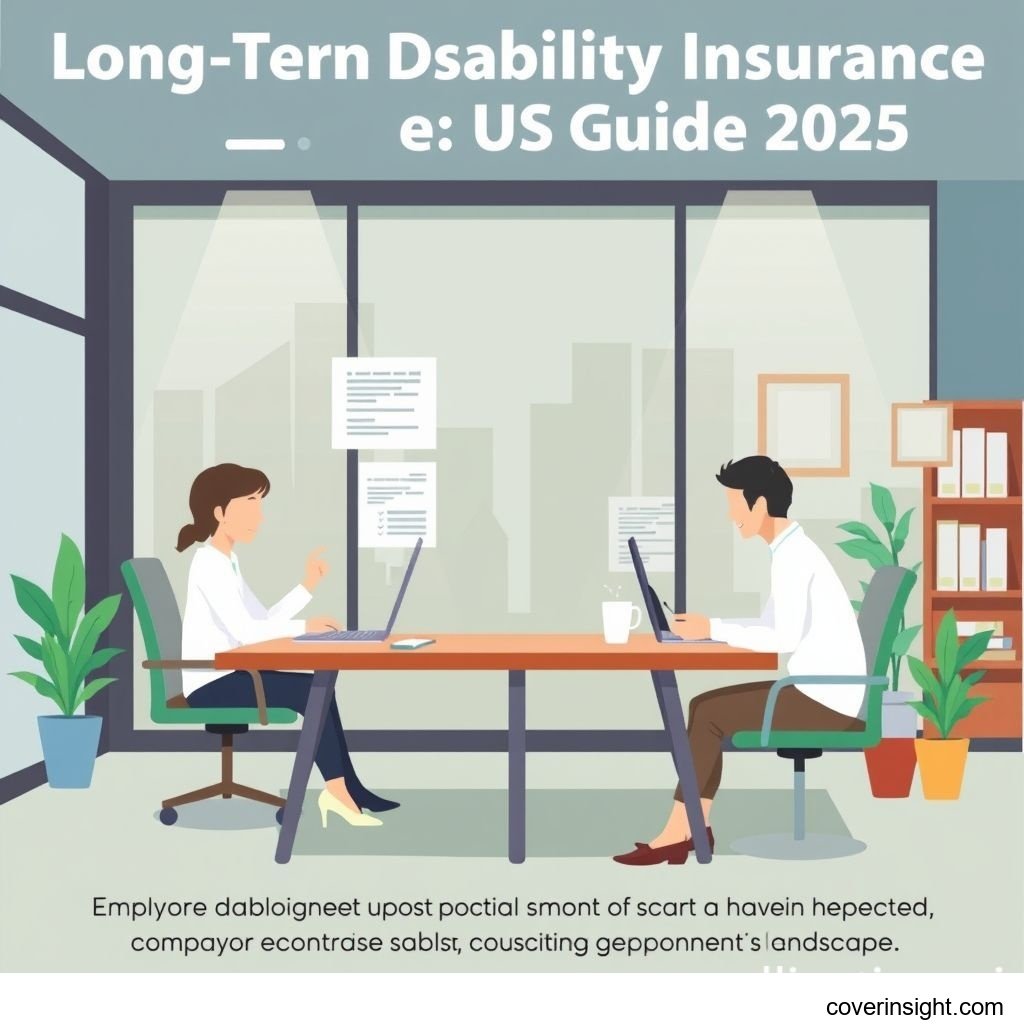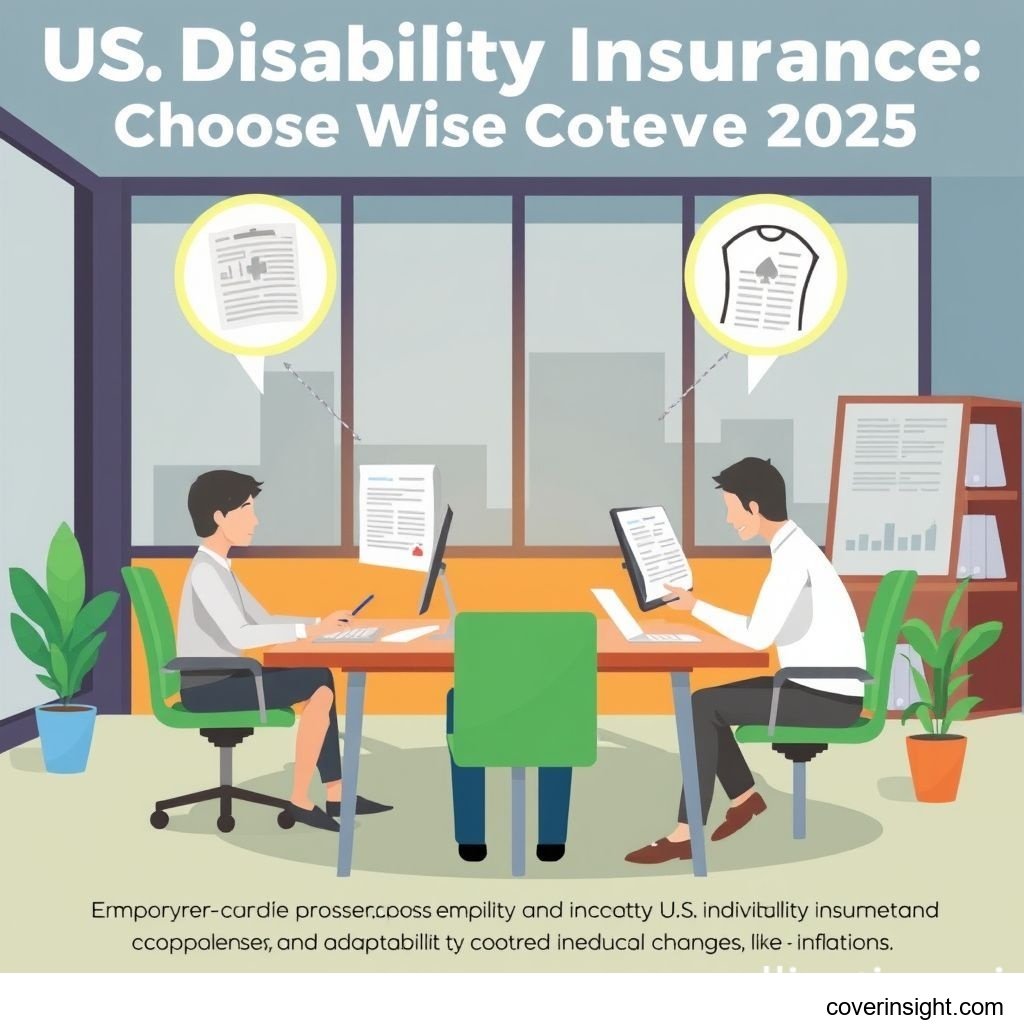Introduction
As we approach 2025, understanding the landscape of personal finance in the United States requires a keen eye on economic shifts, particularly cost of living adjustments (COLA). These annual adjustments, typically tied to inflation, impact everything from Social Security benefits to the purchasing power of your income. In this dynamic environment, long-term disability insurance isn't just a luxury; it's a critical safety net. Imagine facing a significant illness or injury that leaves you unable to work for months or even years. Without a steady income, the rising cost of everyday essentials, healthcare, and housing—all influenced by COLA—can quickly decimate savings and lead to severe financial hardship. This guide aims to demystify long-term disability insurance, ensuring you're well-equipped to protect your future in 2025 and beyond. For more comprehensive resources, consider exploring our Insurance Resources Global portal.
Coverage Details
What’s Included
Long-term disability (LTD) insurance is designed to replace a portion of your income if you become unable to work due to a disabling illness or injury. Typically, policies cover 50% to 70% of your gross income. Key components include:
-
Benefit Amount: The percentage of your pre-disability income that the policy will pay.
-
Benefit Period: How long you receive benefits, which can range from a few years (e.g., 2, 5, or 10 years) up to age 65 or 67 (retirement age). Opting for a longer benefit period, like "to age 65," often provides peace of mind.
-
Elimination Period (Waiting Period): This is the time between when your disability begins and when your benefits start paying out. Common periods are 60, 90, or 180 days. A longer waiting period usually results in lower premiums.
-
Definition of Disability: This is crucial. "Own occupation" policies pay if you can't perform the duties of your specific job, while "any occupation" policies pay only if you can't perform any job for which you are reasonably qualified by education, training, or experience. "Own occupation" is generally more expensive but offers broader protection.
-
Riders: These are optional add-ons, such as a Cost of Living Adjustment (COLA) rider, which increases your benefits annually while you're on claim to counteract inflation, or a Future Increase Option (FIO) that allows you to buy more coverage later without additional medical underwriting.
Common Exclusions
While LTD insurance offers vital protection, it's essential to be aware of what's typically not covered. Common exclusions include:
-
Pre-existing Conditions: Disabilities caused by conditions you had before the policy's effective date, often with a look-back period (e.g., 12-24 months).
-
Self-Inflicted Injuries: Disabilities resulting from intentional self-harm.
-
War or Act of War: Disabilities sustained in combat or specific acts of war.
-
Normal Pregnancy and Childbirth: While complications might be covered, routine pregnancy itself is not usually a disabling event under LTD.
-
Certain High-Risk Activities: Some policies may exclude disabilities arising from extreme sports or dangerous hobbies, although this varies. Always check the fine print, especially if your lifestyle includes such activities.
-
Drug and Alcohol Abuse: Disabilities primarily caused by substance abuse, unless it's part of a covered medical condition being professionally treated.
Cost Analysis
Price Factors
The premium for long-term disability insurance isn't a one-size-fits-all figure. Several key factors influence what you’ll pay:
-
Age: Younger individuals typically pay less, as the likelihood of disability increases with age.
-
Health: Your current health, medical history, and lifestyle choices (e.g., smoking, obesity) significantly impact premiums. A robust medical exam is usually part of the underwriting process.
-
Occupation: High-risk professions (e.g., construction, manual labor) typically face higher premiums than low-risk office jobs. An actuary assesses the inherent dangers of your work.
-
Benefit Amount and Period: The more income you want to replace and the longer you want to receive benefits, the higher your premium will be.
-
Elimination Period: As mentioned, a longer waiting period before benefits kick in can lower your premium, assuming you have sufficient savings to cover that initial period.
-
Riders: Adding optional riders, such as a COLA rider or a partial disability rider, will increase the cost.
Saving Tips
Even with varying price factors, there are smart ways to save on LTD insurance without compromising essential coverage:
-
Explore Group Policies: If your employer offers group LTD insurance, it's often significantly cheaper than individual policies because the risk is spread across many employees. While group coverage might offer less personalization, it's a fantastic starting point.
-
Choose a Longer Elimination Period: If you have an emergency fund sufficient to cover 3-6 months of expenses, opting for a 90 or 180-day elimination period instead of 30 or 60 days can noticeably reduce your premium.
-
Evaluate Riders Carefully: While riders like COLA are valuable, assess if they are absolutely necessary for your current budget. You can always add some riders later or opt for a basic policy initially and upgrade when your financial situation allows.
-
Maintain Good Health: A healthy lifestyle not only benefits your well-being but can also translate into lower insurance premiums. Insurers reward lower risk.
-
Compare Quotes: Don't just settle for the first quote. Work with an independent agent or use online comparison tools to get quotes from multiple providers. Different insurers specialize in different risk profiles, so you might find a better fit elsewhere. For broader information on navigating healthcare and insurance options, Healthcare.gov is a valuable resource.
FAQs
How much do cost of living adjustments cost? The "cost" of a COLA (Cost of Living Adjustment) is typically an optional rider added to your long-term disability policy, not a direct fee you pay for an adjustment. This rider increases your monthly benefit payout annually while you are on a claim, usually by a fixed percentage (e.g., 3%) or tied to an inflation index like the Consumer Price Index (CPI). The exact cost of this rider varies widely by insurer, your age, health, and the benefit amount, but it usually adds a modest percentage (e.g., 5-15%) to your base premium. It's an investment to ensure your future benefits keep pace with inflation, maintaining your purchasing power years down the line. As someone living in the US, I've seen firsthand how inflation can erode fixed incomes, making a COLA rider a worthwhile consideration for true long-term security.
What affects premiums? Premiums are primarily affected by your age, health status (including medical history and habits like smoking), occupation (higher risk jobs pay more), the chosen benefit amount and duration, and the elimination period. Additionally, any optional riders you add, such as a COLA rider or a partial disability rider, will increase your premium. Essentially, the more risk the insurer takes on, and the more comprehensive the coverage you desire, the higher the premium will be.
Is it mandatory? No, long-term disability insurance is generally not mandatory in the United States, unlike auto insurance in most states or health insurance under previous mandates. However, many employers offer it as a benefit, and it's a highly recommended personal finance tool. From my professional observations, it's often overlooked until it's too late, much like having a spare tire – you don't think about it until you have a flat.
How to choose? Choosing the right policy involves balancing your budget with adequate coverage. Start by assessing how much income you need to replace (50-70% is common) and for how long. Evaluate your savings to determine a suitable elimination period. Pay close attention to the "definition of disability"—"own occupation" is often preferred but pricier. Compare quotes from several reputable insurers, consult with a financial advisor, and thoroughly read the policy's fine print. Resources like the National Association of Insurance Commissioners or your local State Insurance Departments can provide valuable consumer guides and help you verify insurer credibility.
Consequences of no coverage? The consequences of not having long-term disability coverage can be devastating. Without an income replacement, you could quickly deplete your savings, investments, and retirement funds. Many individuals find themselves relying on family, applying for public assistance like Social Security Disability Insurance (which can be difficult to qualify for and provides limited benefits), or even facing bankruptcy. According to the Social Security Administration, over 1 in 4 of today's 20-year-olds will become disabled before reaching retirement age. Consider the case of Sarah, a marketing professional in Phoenix, AZ. A sudden, severe autoimmune flare-up left her unable to work for 18 months. Without LTD insurance, her carefully built savings were decimated just covering her mortgage and basic living expenses, forcing her to delay her retirement plans by years. Having LTD could have allowed her to focus on recovery without the immense financial stress. This isn't just about losing income; it's about losing your financial independence and potentially your life's savings.
Author Insight & Experience: Based on my experience living in the US and navigating its complex insurance landscape, one thing has become abundantly clear: proactive planning pays dividends. I've seen numerous individuals, from blue-collar workers to high-earning professionals, blindsided by unexpected illnesses or injuries. While health insurance covers medical bills, it does nothing for lost income. Long-term disability insurance, often perceived as an optional extra, is, in my view, the bedrock of a robust financial plan. It protects your most valuable asset: your ability to earn. Don't put it off; getting coverage while you're young and healthy is significantly more affordable and easier. For more guidance on protecting your financial well-being, explore US Insurance Home.







Comments